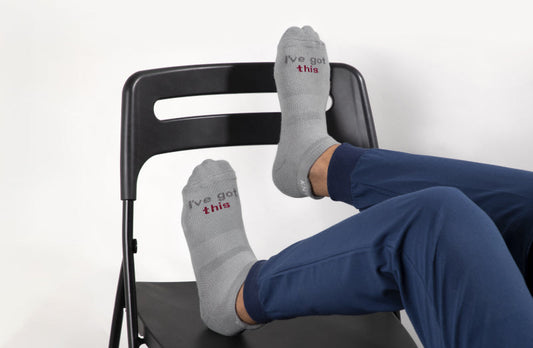Accidents happen when we least expect them. Whether it’s a minor cut while chopping vegetables or a serious injury at work, knowing basic first aid can make all the difference. You don’t need to be a medical professional to help sometimes, a simple action can save a life.
The First Rule: Stay Calm and Assess the Situation
Before you jump in to help, take a deep breath. Panicking won’t help anyone. Quickly assess the situation:
- Is the person conscious?
- Is there any immediate danger (fire, traffic, falling debris)?
- Can you handle the situation, or do you need emergency help?
If the injury is serious, call emergency services immediately. Even if you’re unsure, it’s better to get help on the way.
Treating Cuts and Wounds
A small cut might not seem like a big deal, but if left untreated, it can become infected. Here’s what to do:
-
Wash your hands – This prevents bacteria from entering the wound.
-
Stop the bleeding – Use a clean cloth or bandage and apply gentle pressure.
-
Clean the wound – Rinse with clean water. Avoid using hydrogen peroxide, as it can damage the tissue.
-
Apply an antiseptic – This helps prevent infection.
-
Cover the wound – Use a bandage or sterile dressing.
- Change the dressing daily – Keep an eye on it for signs of infection (redness, swelling, pus).
If the bleeding is severe or doesn’t stop after 10 minutes of pressure, seek medical help immediately.
Ready to explore our amazing scrubs collection? Browse the best here
Burns: How to Cool Things Down
Burns can happen in the kitchen, at a campfire, or even from sun exposure. Treating burns quickly can reduce pain and prevent complications.
For minor burns (first-degree burns):
- Cool the burn – Run cool (not ice-cold) water over it for 10-15 minutes.
- Apply a soothing gel – Aloe vera or a burn ointment works well.
- Cover it loosely – Use a sterile bandage.
- Avoid popping blisters – This increases the risk of infection.
For serious burns (second or third-degree burns):
- Do NOT apply ice, butter, or toothpaste—these can make it worse.
- Do NOT remove burnt clothing stuck to the skin.
- Seek medical help immediately.
Choking: The Heimlich Maneuver
Choking can happen while eating or if an object gets lodged in the throat. If someone is choking but can still cough, encourage them to keep coughing—it might clear the blockage.
If they can’t breathe, speak, or cough, take action:
- Stand behind the person and wrap your arms around their waist.
- Make a fist and place it just above their belly button.
- Grab your fist with your other hand and perform quick, upward thrusts until the object is dislodged.
For babies under 1 year old:
- Lay the baby face down on your forearm, supporting their head.
- Give five firm back slaps between the shoulder blades.
- If that doesn’t work, turn the baby face up and give five chest thrusts using two fingers in the center of the chest.
If the person becomes unconscious, start CPR immediately.
CPR (Cardiopulmonary Resuscitation): Restarting the Heart
CPR can save a life during a cardiac arrest. If a person is unresponsive and not breathing, follow these steps:
-
Call emergency services immediately.
-
Start chest compressions:
- Place your hands in the center of their chest, one on top of the other.
- Push hard and fast (about 100-120 compressions per minute).
- Allow the chest to rise completely between compressions.
-
Rescue Breaths (if trained):
- Tilt the head back, lift the chin, and pinch the nose.
- Give two breaths, watching for the chest to rise.
- Continue 30 compressions followed by two breaths until help arrives.
If you’re not trained in rescue breaths, just keep doing chest compressions—they’re the most important part of CPR.
Dealing with Sprains and Strains
Twisted ankle? Pulled muscle? Follow the RICE method:
- Rest – Stop using the injured area.
- Ice – Apply ice wrapped in a cloth for 15-20 minutes.
- Compression – Use an elastic bandage to reduce swelling.
- Elevation – Keep the injured part raised above heart level.
If the pain is severe or the joint looks deformed, seek medical attention.
Nosebleeds: Tilt Forward, Not Back
If someone gets a nosebleed:
- Don’t tilt their head back—this can cause blood to go down the throat.
- Have them lean slightly forward.
- Pinch the soft part of the nose (just below the bridge) for about 10-15 minutes.
- Apply an ice pack on the nose or cheeks.
If the bleeding lasts more than 20 minutes, or if it’s caused by a head injury, seek medical help.
Discover the best lab coat designed for comfort and protection. Shop from here.
Recognizing a Stroke (F.A.S.T. Test)
A stroke can happen suddenly, and quick action is crucial. Use the F.A.S.T. test to check for signs:
- Face – Is one side of the face drooping?
- Arms – Can they raise both arms, or is one weak?
- Speech – Is their speech slurred or strange?
- Time – Call emergency services immediately if you see these signs.
Heart Attacks: Know the Symptoms
A heart attack isn’t always like in the movies (clutching the chest and falling over). Symptoms can include:
- Chest pain or pressure
- Pain in the arm, jaw, back, or stomach
- Shortness of breath
- Nausea, sweating, dizziness
If you suspect a heart attack:
- Call emergency services immediately.
- Have the person sit down and stay calm.
- If they’re conscious, give them an aspirin (unless they’re allergic).
Handling Insect Stings and Allergic Reactions
For minor insect stings:
Remove the stinger if present (use a credit card, not tweezers).
Wash the area and apply ice to reduce swelling.
- For severe allergic reactions (anaphylaxis):
- Look for difficulty breathing, swelling of the face or throat, and dizziness.
- If they have an EpiPen, use it immediately.
Call emergency services.














